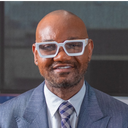I've read in celebrity gossip mags that really visible bunny lines can be a result of Botox between the eyebrows. Best example is Nicole Kidman.
Is this really true? Do your nose muscles overcompensate when you "freeze" the muscles between your brows? I don't want the "11s," but I don't want to increase wrinkles elsewhere, either.
Answers (24)
From board-certified doctors and trusted medical professionals

Dr. Sanusi Umar, MD
Dermatologic Surgeon, Board Certified in Dermatology
Answer

Dr. Ron Shelton, MD
Dermatologic Surgeon, Board Certified in Dermatology
Answer

Dr. Kenneth D. Steinsapir, MD
Oculoplastic Surgeon, Board Certified in Ophthalmology
Answer
More Botox Questions
See all Botox Q&AWE SEND PRETTY
EMAILS
What’s trending? Who’s turning heads? Which TikTok myths need busting? We’ve got you. No fluff, no gatekeeping—just real talk. Get our free, unfiltered newsletter.


